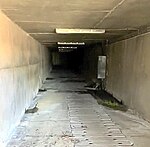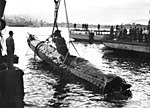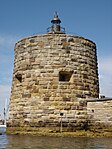Royal Australian Navy Heritage Centre

The Royal Australian Navy Heritage Centre is the maritime museum of the Royal Australian Navy. The centre opened on 4 October 2005 and is located within the Public Access Area on the northern end of the Garden Island naval base in Sydney. The need for such a facility was first recognised in 1922, by Vice Admiral Sir William Creswell who suggested the building of a museum to permanently display the Australian Navy's already rich and unique heritage. Since then, there have been several attempts to establish an international-standard naval museum. The origins of the RANHC date from 2001, when the then Chief of the Navy commissioned a Naval Heritage Management Study to examine in detail how the RAN's past might best be used to support the present Navy's goals. One of the most important recommendations was the creation of a facility for the public display of the Naval Heritage Collection (NHC). Once approval for funding was received, a RANHC Project Board was formed and the project began on 24 May 2004. The NHC contains more than 250,000 individual items, and the mission of the RANHC is to display those objects of museum standard to the public, and through these displays capture something of the Australian naval experience.
Excerpt from the Wikipedia article Royal Australian Navy Heritage Centre (License: CC BY-SA 3.0, Authors, Images).Royal Australian Navy Heritage Centre
Cowper Wharf Roadway, Sydney Potts Point
Geographical coordinates (GPS) Address Website Nearby Places Show on map
Geographical coordinates (GPS)
| Latitude | Longitude |
|---|---|
| N -33.859493 ° | E 151.230004 ° |
Address
HMAS Kuttabul
Cowper Wharf Roadway
2011 Sydney, Potts Point
New South Wales, Australia
Open on Google Maps











